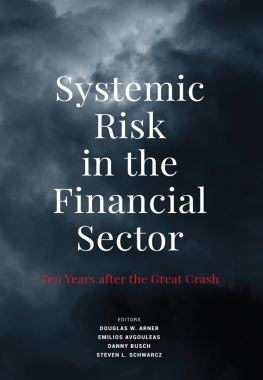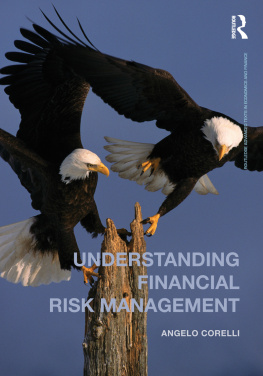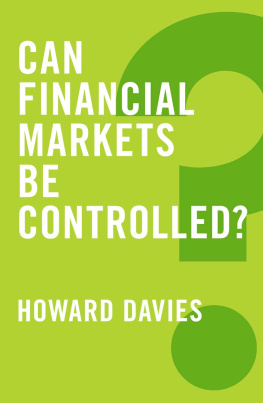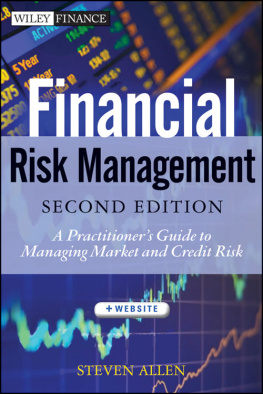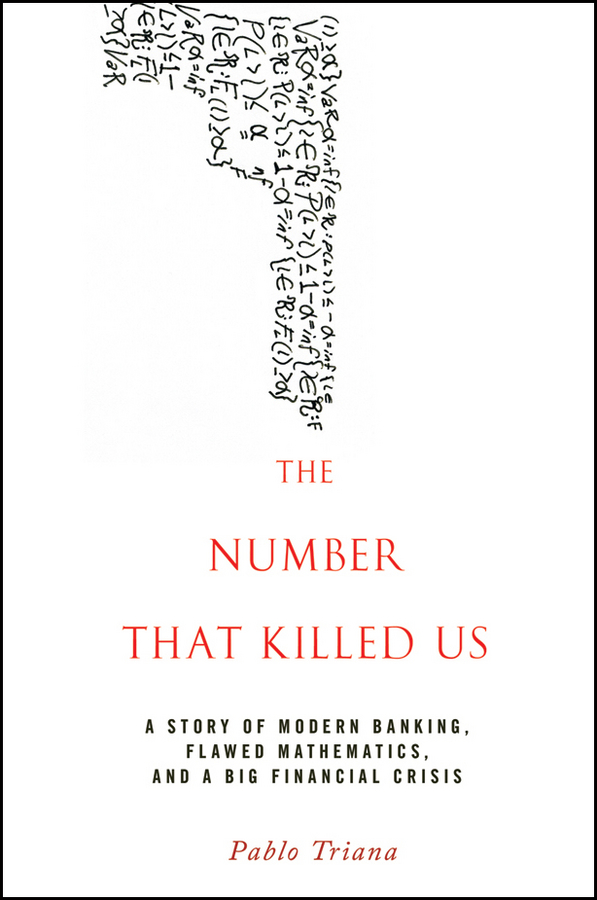Contents
Praise for The Number That Killed Us
Finally, here is a book that puts value-at-risk, VaR, at the center of the financial crisis, where it belongs. Pablo Triana deftly traces the history of VaR, from what seemed like a good idea at Bankers Trust to a cancer that has infected the markets for more than two decades. In the late 1980s, when financial innovation began to explode, VaR-type models appeared to be a reasonable way of capturing mounting new risks with a single numerical measure. But, as Trianas in-depth research shows, regulators foolishly hard-wired VaR into the rules governing risk, and disaster soon followed. Even after numerous VaR-related crisesthe Asian currency devaluation, the fall of Long-Term Capital Management, and the recent subprime and CDO fiascosVaR remains a maddeningly central player, even as it promises to continue distorting risk and wreaking financial havoc. This book is a cautionary tale.
Frank Partnoy, University of San Diego School of Law
VaR is an essential component of sound risk management systems.
Professor Philippe Jorion, April 1997
I believe that VaR is the alibi that bankers will give shareholders (and the bailing-out taxpayer) to show documented due diligence, and will express that their blow-up came from truly unforeseeable circumstances and events with low probability not from taking large risks that they didnt understand. I maintain that VaR encourages untrained people to take misdirected risks with shareholders, and ultimately the taxpayers, money.
Trader and Best-Selling Author Nassim Taleb, April 1997
A megafinancial cataclysm and a megapublic bailout later...
The risk-taking model that emboldened Wall Street to trade with impunity is broken and everyone is coming to the realization that no algorithm can substitute for old-fashioned due diligence. VaR failed to detect the scope of the markets collapse. The past months have exposed the flaws of a financial measure based on historical prices.
Financial Reporter Christine Harper, January 2008
It is clear in retrospect that the VaR measures of risk were faulty. When the crisis broke VaR proved highly misleading.
Financial Regulator Lord Turner, February 2009

Copyright 2012 by Pablo Triana. All rights reserved.
Published by John Wiley & Sons, Inc., Hoboken, New Jersey.
Published simultaneously in Canada.
No part of this publication may be reproduced, stored in a retrieval system, or transmitted in any form or by any means, electronic, mechanical, photocopying, recording, scanning, or otherwise, except as permitted under Section 107 or 108 of the 1976 United States Copyright Act, without either the prior written permission of the Publisher, or authorization through payment of the appropriate per-copy fee to the Copyright Clearance Center, Inc., 222 Rosewood Drive, Danvers, MA 01923, (978) 7508400, fax (978) 6468600, or on the Web at www.copyright.com . Requests to the Publisher for permission should be addressed to the Permissions Department, John Wiley & Sons, Inc., 111 River Street, Hoboken, NJ 07030, (201) 7486011, fax (201) 7486008, or online at www.wiley.com/go/permissions .
Limit of Liability/Disclaimer of Warranty: While the publisher and author have used their best efforts in preparing this book, they make no representations or warranties with respect to the accuracy or completeness of the contents of this book and specifically disclaim any implied warranties of merchantability or fitness for a particular purpose. No warranty may be created or extended by sales representatives or written sales materials. The advice and strategies contained herein may not be suitable for your situation. You should consult with a professional where appropriate. Neither the publisher nor author shall be liable for any loss of profit or any other commercial damages, including but not limited to special, incidental, consequential, or other damages.
For general information on our other products and services or for technical support, please contact our Customer Care Department within the United States at (800) 7622974, outside the United States at (317) 5723993 or fax (317) 5724002.
Wiley also publishes its books in a variety of electronic formats. Some content that appears in print may not be available in electronic books. For more information about Wiley products, visit our web site at www.wiley.com .
Library of Congress Cataloging-in-Publication Data:
Triana, Pablo.
The number that killed us : a story of modern banking, flawed mathematics, and a big financial crisis / Pablo Triana.
p. cm.
Includes index.
ISBN 978-0-470-52973-7 (hardback); 978-1-118-17154-7 (ebk); 978-1-118-17153-0 (ebk); 978-1-118-17155-4 (ebk)
1. Financial futures. 2. Global Financial Crisis, 20082009. 3. Risk management. I. Title.
HG6024.A3T75 2012
332.64'52dc23
2011029937
To those interested in the safety of the markets, the economy, and society.
Introduction
When a Tie Is More Than Just a Tie
On September 10, 2009, former trader and best-selling author Nassim Taleb did something that he very seldom does: He wore a tie. By so graphically breaking with tradition (Taleb has publicly expressed his distaste for the blood-constraining artifacts, as well as for those who tend to don them), the Lebanese-American let the world know that that was a very special day for him, so special that it amply justified the sacrifice of temporarily betraying a sacred personal predisposition.
So what prompted the author of The Black Swan to uncharacteristically don such an alien piece of clothing? Well, he had been invited to a very solemn venue by very distinguished hosts, with such occasion quite likely demanding certain formalism in the way of attire. And that was an invitation that Taleb had every intention of accepting. In fact, he had been waiting and expecting for more than a decade; there was no way he was going to miss it. The raison dtre of the event for which his company was now being required had been close to Talebs heart for most of his professional and intellectual life. It represented a central theme in his actions and ideas, close to an obsession, akin to an identity definer. He had through the years amply warned as to the havoc that might be wreaked should others massively act in a manner counter to his convictions. Such concerns typically went unheeded (to the detriment, it turned out, of society), but now he was being offered a pulpit that seemed irresistibly magnificent, impossibly far-reaching. This time, it seemed, the world would have no option but to attentively listen.
As Taleb entered the Rayburn Building of the U.S. House of Representatives in the Capitol Hill neighborhood of Washington DC that September morning, he must have felt anticipation and, especially, vindication. As he approached the sober room where several men and women awaited the start of the House Committee on Science and Technologys hearing on the responsibility of mathematical model Value at Risk (VaR) for the terrible economic and financial crisis that had caused so much misery since the previous couple of years, Taleb probably reflected proudly on all those times when, indefatigably, and in the face of harsh opposition, he alerted us of the lethal threat to the system posed by the widespread use of VaR in financeland. Now that the damage wrought by VaR was so inescapably obvious that lawmakers from the most powerful nation on the planet had been motivated into investigating the device, Taleb no longer seemed like a lone wolf howling in the markets wild, but rather appeared as imperially prescient.


